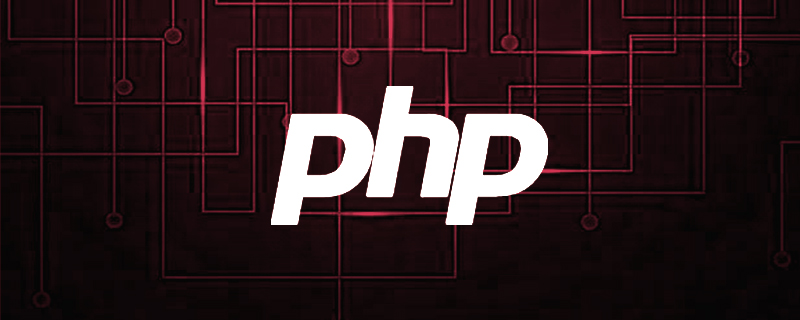Golang's Gob data serialization tool serializes data structures into binary format for storage and transmission. Its advantages include ease of use, cross-platform compatibility, and efficiency. Gob uses reflection to serialize and deserialize data and provides simple serialization and deserialization functions for use.

Introduction to Golang data serialization tool Gob
Overview
Golang provides a built-in tool called Gob Data serialization tool that serializes data structures into a binary format so that they can be easily stored and transmitted over the network or disk.
How it works
Gob uses a reflection mechanism to analyze the data structure and convert it into a binary bit stream. When deserializing, Gob parses the bitstream back to the original data structure.
Advantages
- Simple and easy to use: The Golang library provides built-in functions for serializing and deserializing data.
- Cross-platform: Gob serialization format is platform-independent and can be transferred between different machines and operating systems.
- Efficient: Gob uses a compact binary format, reducing storage and transmission overhead.
Syntax
Serialization:
import (
"bytes"
"encoding/gob"
)
func serialize(data interface{}) ([]byte, error) {
buf := new(bytes.Buffer)
enc := gob.NewEncoder(buf)
err := enc.Encode(data)
return buf.Bytes(), err
}Deserialization:
func deserialize(data []byte) (interface{}, error) {
buf := bytes.NewBuffer(data)
dec := gob.NewDecoder(buf)
var decodedData interface{}
err := dec.Decode(&decodedData)
return decodedData, err
}Practical case
Consider the following Person structure:
type Person struct {
Name string
Age int
}To use Gob to serialize and deserialize Person, you can do this:
func main() {
jack := Person{Name: "Jack", Age: 42}
// 序列化
serializedData, err := serialize(jack)
if err != nil {
panic(err)
}
// 反序列化
var deserializedPerson Person
err = deserialize(serializedData)
if err != nil {
panic(err)
}
fmt.Println("Deserialized Person:", deserializedPerson)
} Output:
Deserialized Person: {Jack 42}The above is the detailed content of Introduction to Gob, the Golang data serialization tool. For more information, please follow other related articles on the PHP Chinese website!
 go语言有没有缩进Dec 01, 2022 pm 06:54 PM
go语言有没有缩进Dec 01, 2022 pm 06:54 PMgo语言有缩进。在go语言中,缩进直接使用gofmt工具格式化即可(gofmt使用tab进行缩进);gofmt工具会以标准样式的缩进和垂直对齐方式对源代码进行格式化,甚至必要情况下注释也会重新格式化。
 go语言为什么叫goNov 28, 2022 pm 06:19 PM
go语言为什么叫goNov 28, 2022 pm 06:19 PMgo语言叫go的原因:想表达这门语言的运行速度、开发速度、学习速度(develop)都像gopher一样快。gopher是一种生活在加拿大的小动物,go的吉祥物就是这个小动物,它的中文名叫做囊地鼠,它们最大的特点就是挖洞速度特别快,当然可能不止是挖洞啦。
 聊聊Golang中的几种常用基本数据类型Jun 30, 2022 am 11:34 AM
聊聊Golang中的几种常用基本数据类型Jun 30, 2022 am 11:34 AM本篇文章带大家了解一下golang 的几种常用的基本数据类型,如整型,浮点型,字符,字符串,布尔型等,并介绍了一些常用的类型转换操作。
 tidb是go语言么Dec 02, 2022 pm 06:24 PM
tidb是go语言么Dec 02, 2022 pm 06:24 PM是,TiDB采用go语言编写。TiDB是一个分布式NewSQL数据库;它支持水平弹性扩展、ACID事务、标准SQL、MySQL语法和MySQL协议,具有数据强一致的高可用特性。TiDB架构中的PD储存了集群的元信息,如key在哪个TiKV节点;PD还负责集群的负载均衡以及数据分片等。PD通过内嵌etcd来支持数据分布和容错;PD采用go语言编写。
 go语言是否需要编译Dec 01, 2022 pm 07:06 PM
go语言是否需要编译Dec 01, 2022 pm 07:06 PMgo语言需要编译。Go语言是编译型的静态语言,是一门需要编译才能运行的编程语言,也就说Go语言程序在运行之前需要通过编译器生成二进制机器码(二进制的可执行文件),随后二进制文件才能在目标机器上运行。
 聊聊Golang自带的HttpClient超时机制Nov 18, 2022 pm 08:25 PM
聊聊Golang自带的HttpClient超时机制Nov 18, 2022 pm 08:25 PM在写 Go 的过程中经常对比这两种语言的特性,踩了不少坑,也发现了不少有意思的地方,下面本篇就来聊聊 Go 自带的 HttpClient 的超时机制,希望对大家有所帮助。
 为速度而生:PHP 与Golang 的合体 —— RoadRunnerSep 23, 2022 pm 07:40 PM
为速度而生:PHP 与Golang 的合体 —— RoadRunnerSep 23, 2022 pm 07:40 PM发现 Go 不仅允许我们创建更大的应用程序,并且能够将性能提高多达 40 倍。 有了它,我们能够扩展使用 PHP 编写的现有产品,并通过结合两种语言的优势来改进它们。


Hot AI Tools

Undresser.AI Undress
AI-powered app for creating realistic nude photos

AI Clothes Remover
Online AI tool for removing clothes from photos.

Undress AI Tool
Undress images for free

Clothoff.io
AI clothes remover

AI Hentai Generator
Generate AI Hentai for free.

Hot Article

Hot Tools

SublimeText3 Chinese version
Chinese version, very easy to use

WebStorm Mac version
Useful JavaScript development tools

Zend Studio 13.0.1
Powerful PHP integrated development environment

SublimeText3 Linux new version
SublimeText3 Linux latest version

Safe Exam Browser
Safe Exam Browser is a secure browser environment for taking online exams securely. This software turns any computer into a secure workstation. It controls access to any utility and prevents students from using unauthorized resources.








